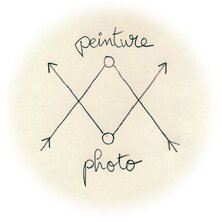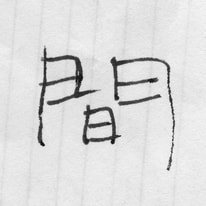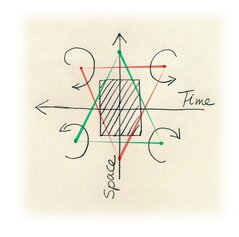Two things happened during the stay in Tokyo in 1986 that were going to have long-term consequences. By the time I reached the Japanese capital, I was pretty clear about the multi-disciplinary nature of my work. I had actively practised painting, photography and performance for many years and was even beginning to sell my writing to magazines. From Marma, the artistic collaboration with my childhood friend Jean Jacques Martin, I had adopted the name Ma and defined my practice by saying that I worked "on the space between things".
|
|
I AM MA.
As simple as that. And I work on the space between things. |
© 2017
|



